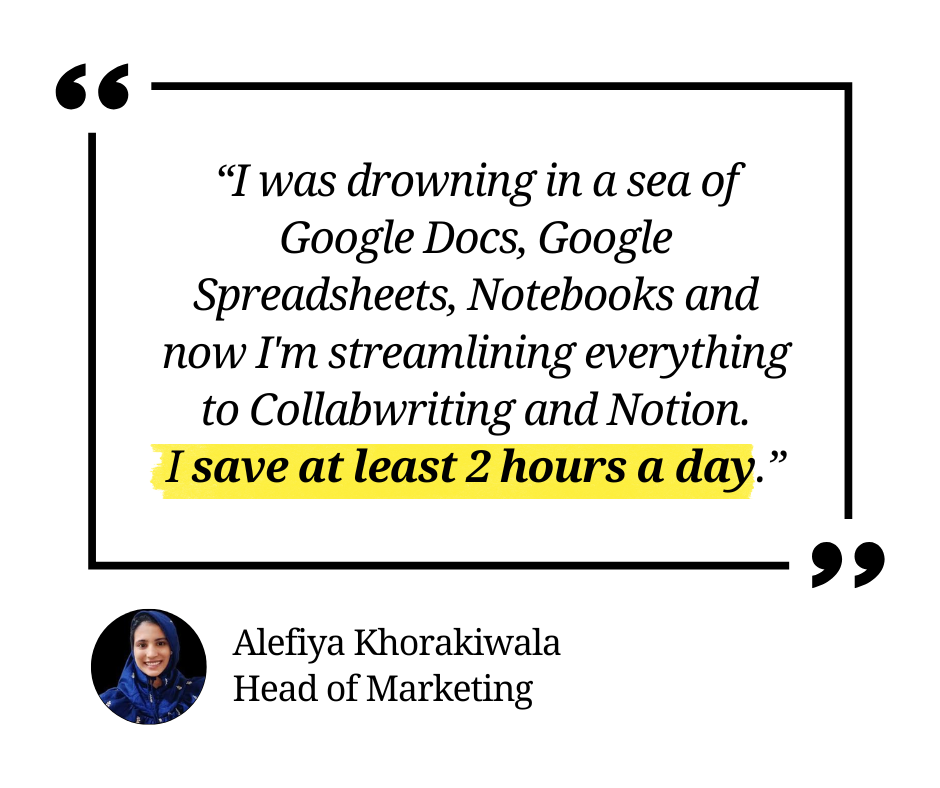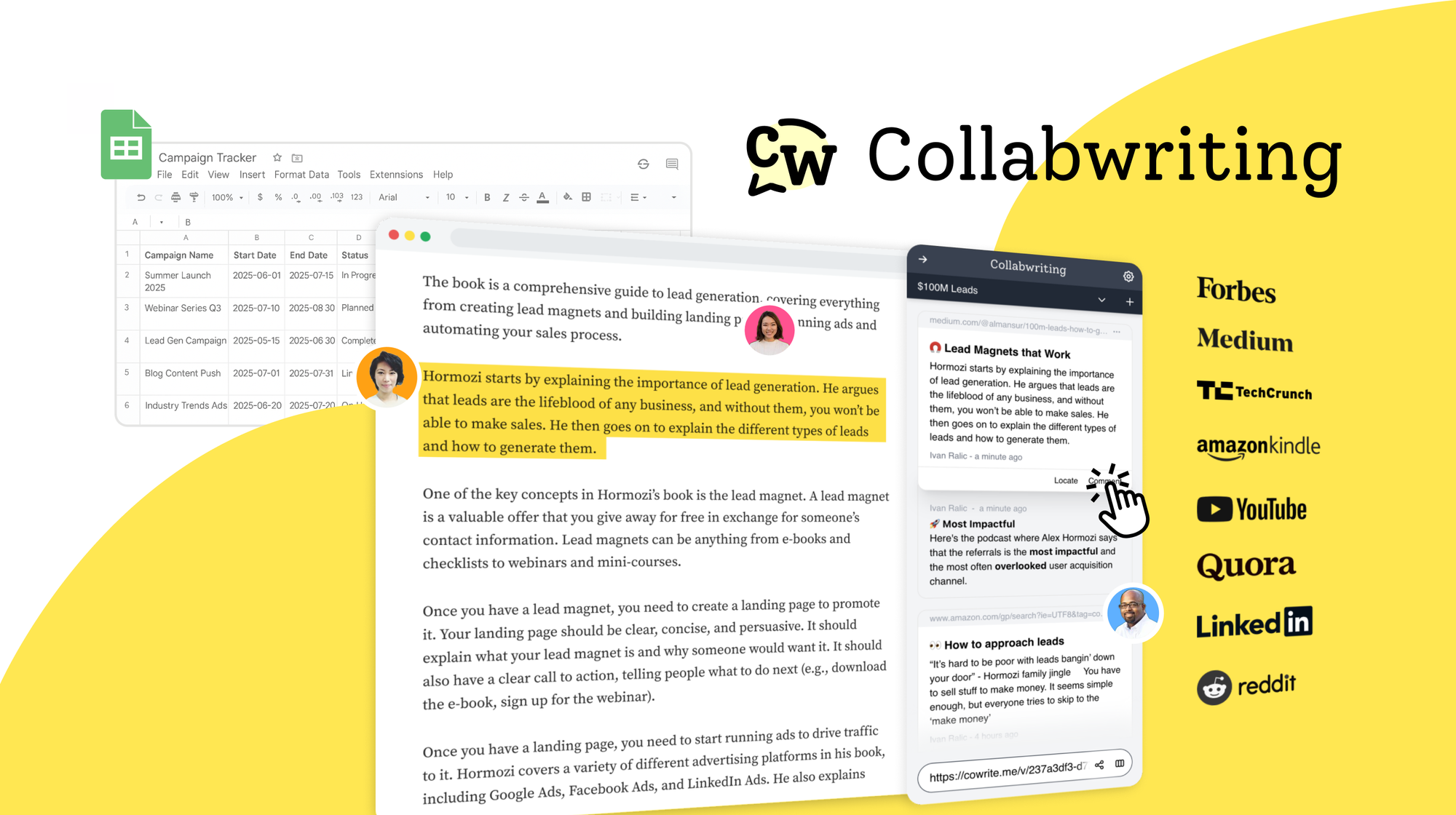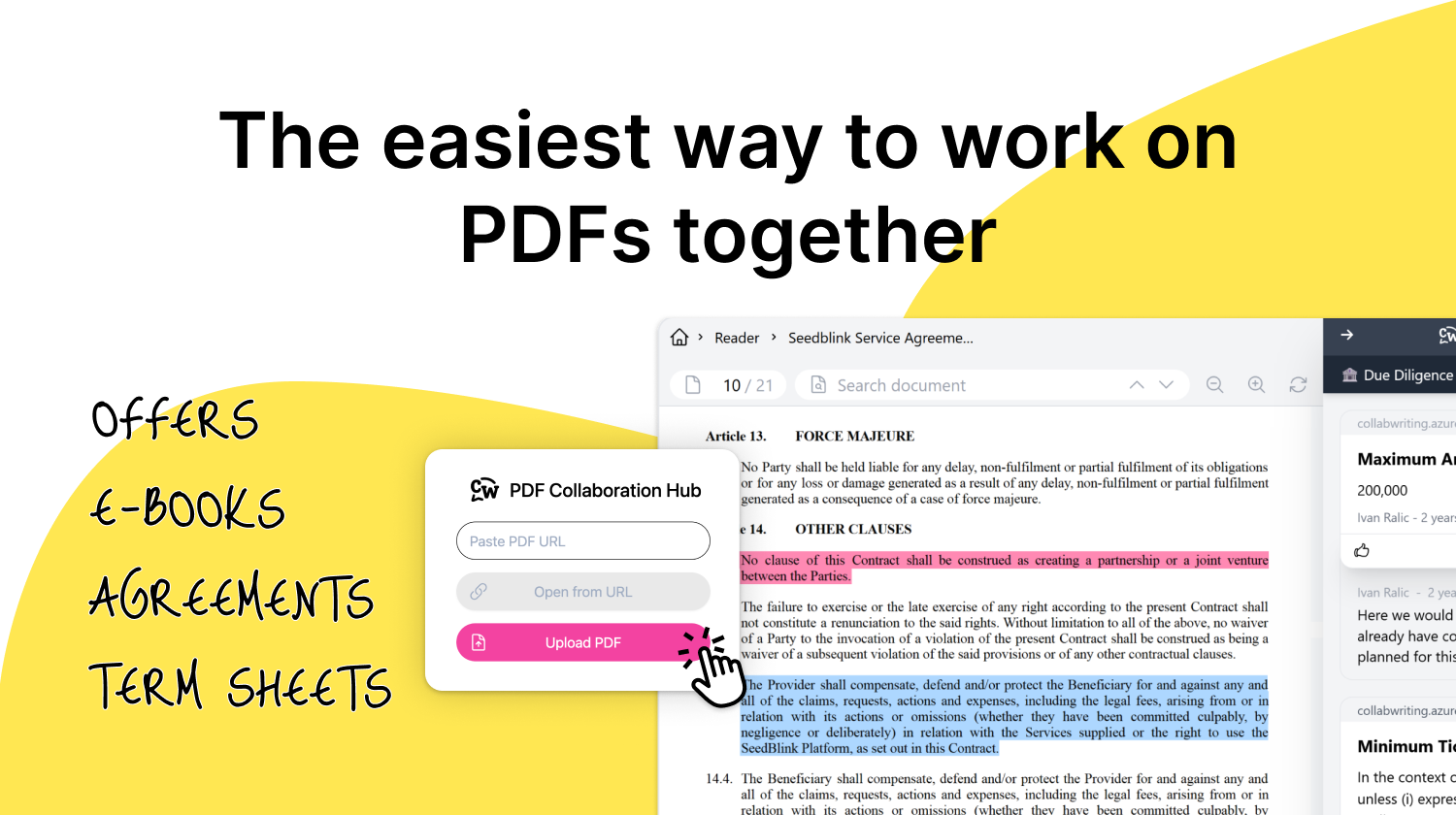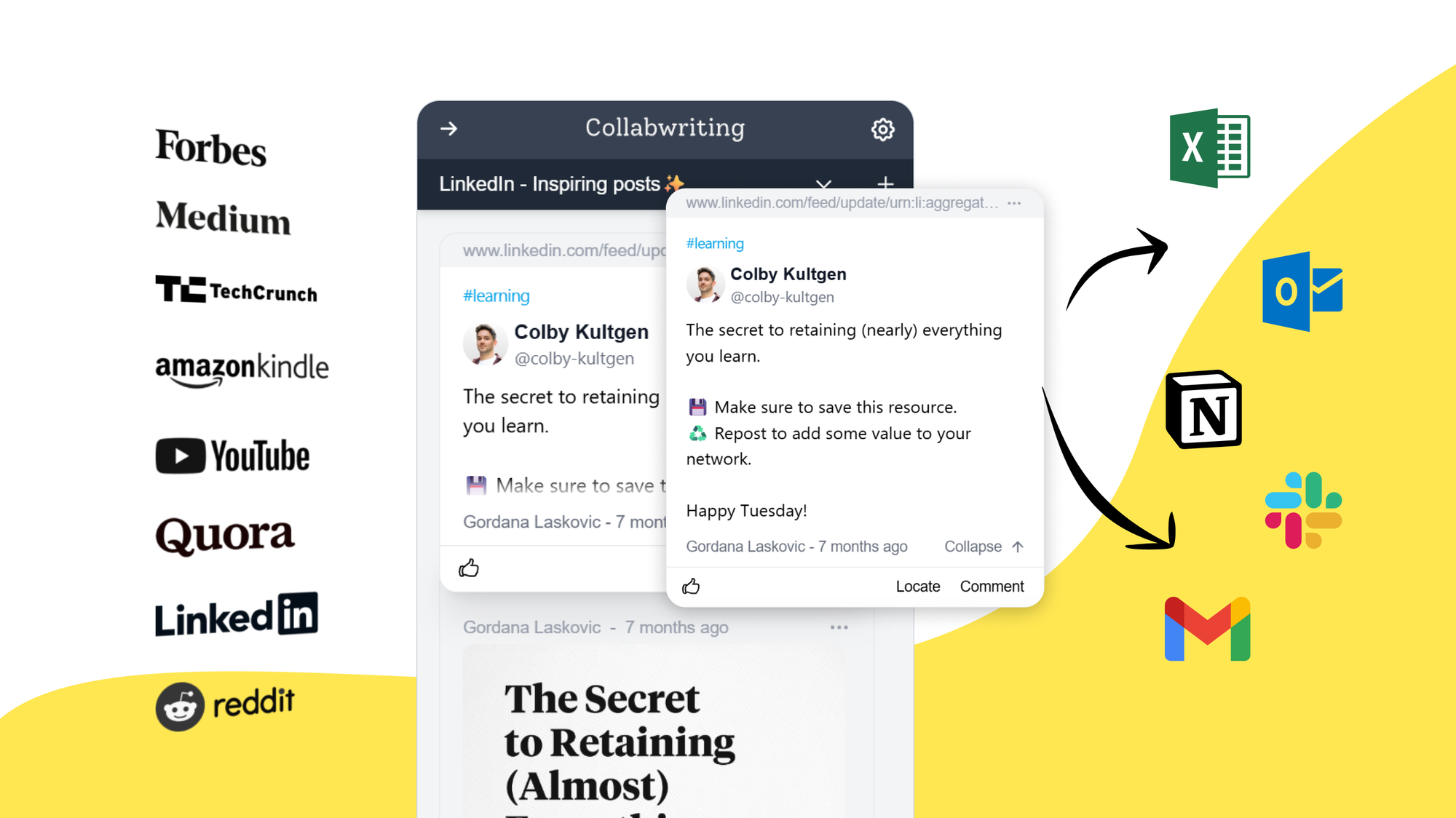If you're a VP of Marketing, content strategist, or campaign lead, chances are your team is juggling multiple spreadsheets just to keep track of everything.
Budgets, deadlines, creative briefs, copy drafts, visual assets, performance metrics - all scattered across endless rows, tabs, and shared folders.
For content strategists, the challenge is even more layered:
You're managing multiple content calendars, aligning messaging across channels, keeping tabs on research sources, and coordinating with writers, designers, and external collaborators.
And often, you're doing it all in spreadsheets that weren't built for this kind of work.
Why Spreadsheets Don’t Work for Managing Campaigns
They might've been fine when you had one or two campaigns. But once you're handling five, ten, or more, across different channels, audiences, and team members, spreadsheets start showing their limits fast.
Here’s how:
- No context, just data. A deadline without a brief. A task without a link. A row with a name but no backstory. Spreadsheets strip away the nuance, and you end up asking people ''what does this even mean?'' more often than you should.
- Scattered communication. Feedback comes through Slack. Copy lives in Google Docs. Visuals are in Drive. Decisions happen on calls. Nothing is in one place, and you're stuck piecing it all together.
- Everyone updates their own version. Someone forgets to update status. Someone duplicates a tab. Suddenly, you're spending half a meeting just figuring out what's accurate.
- No quick overview. You can't get a real campaign snapshot without scrolling across six tabs and pinging three people. That's not sustainable.
- Manual everything. Every update, reminder, and check-in needs to be done by hand. It's busywork and it takes time away from actual strategy.

Spreadsheets don't fail because they're bad tools. They fail because they weren't designed for this kind of work.
The Longer You Stay in Spreadsheet Chaos, the More It Costs You
At first, it just feels a bit messy.
Someone forgets to update a status. A link is missing. You spend five extra minutes looking for the latest version.
No big deal, right?
But it builds up, slowly, then all at once.
- Deadlines start slipping.
- A campaign launches with the wrong copy because the doc wasn't updated.
- An asset gets missed because it was buried in someone’s Drive folder.
- You realize two people were working on the same thing… without knowing.
Worse - you start spending more time coordinating than actually creating.
Instead of leading strategy, you're answering Slack pings like:
- Hey, where's that thing we talked about in the meeting?
- Do we have the final version of the banner?
- Wait, wasn't this supposed to go live yesterday?
You feel like a traffic controller instead of a marketer. And the team feels it too: unclear priorities, repeated work, and mounting frustration.
Spreadsheets aren't failing because your team is disorganized. They're failing because they weren't built to handle the pace, complexity, and collaboration modern campaigns require.
So... what does a better system look like?
➡️ A single source of truth
➡️ Real-time updates
➡️ Contextual collaboration
➡️ Organized workflow
➡️ Easy sharing
What a Better Campaign Workflow Actually Looks Like
If you've outgrown spreadsheets, you don't just need another tool. You need a different way of working, one that fits how your team actually thinks, plans, and delivers.
Here's what that looks like in practice:
1. Everything lives in one place.
Not just deadlines and task names but context.
The brief, the creative references, the research behind the idea, and the client's feedback.
When everything's in one workspace, no one has to dig through Slack or wonder where the "final final" version is.
2. Comments where the work happens.
You shouldn't have to open five tabs just to leave feedback.
- Your copywriter should be able to comment directly on a saved snippet from a competitor's blog.
- Your strategist should be able to capture a line from a YouTube video and ask, ''Could we say this better?''
3. Clusters instead of chaos.
Group insights, ideas, assets, and notes by campaign, client, or content pillar, not by random spreadsheet tabs.
When you need something, you know exactly where to look.
4. Real-time collaboration (without noise).
Tag people only when it matters. Mention someone on a specific snippet.
Everyone gets just enough signal, and none of the noise.
5. A clear path from idea to execution.
No more jumping between tools just to move a campaign forward.
You can go from research → to draft → to approval in the same place, without copy/pasting links or losing track of feedback.
What This Looks Like in the Real World
Take a content team inside a mid-size B2B company.
They're running five campaigns at once:
A product launch, a webinar series, a lead gen campaign, a blog push, and social content tied to industry trends.
They're using spreadsheets to track tasks, Google Docs for copy, Slack for coordination, Drive folders for visuals, and Notion for research notes.
At first glance, it works.
But as things move faster, cracks start to show.
- The strategist drops a great competitor quote into Slack. A few days later, no one can find it.
- A designer uses an outdated version of the copy because the doc wasn't linked in the spreadsheet.
- The campaign lead has to manually remind everyone of deadlines every Monday because the spreadsheet doesn't do it.
- The intern saves interesting research in their own notes app... but no one ever sees it.
- Feedback happens in too many places: Slack, email, comments on docs, and half of it gets lost.
They're spending more time chasing information than making progress.
Now imagine they shift to a workflow built around capturing and connecting everything in one place:
- The strategist highlights that quote from the competitor's landing page and tags the copywriter directly under it.
- The designer gets notified when the copy is marked ''final'' and it's attached to the visual brief.
- All campaign research lives in shared clusters, organized by campaign and client so everyone sees the same context.
- When it's time to present, the strategist exports the best insights straight into the deck with source links still attached.
How Collabwriting Makes This Workflow Simple
You don't need a heavy project management system or a maze of integrations to fix this. What you need is a lightweight layer that gives structure to all the fragments your team is already collecting.
Enter Collabwriting.
Instead of juggling screenshots, saved links, notes, and tabs, Collabwriting lets your team:
- Highlight the exact part of any webpage, PDF, or YouTube video
- Not just the link. The exact sentence that caught your eye.
- Add comments, tags, and mentions directly on top of that content
- So everyone knows why it matters and who it's for.
- Group everything into clusters
- Whether it's by campaign, client, or content pillar, insights stay organized and easy to find.
- Bring in content from anywhere
- Save from LinkedIn, Twitter/X, Reddit, Kindle highlights, PDFs, or even Quora- all in one place.
- Share context, not chaos
- With one link, a teammate or client can see what you saved, what you said, and where it came from.
So instead of starting every campaign from scratch (or Slack), your team opens a cluster and sees:
- Past research
- Real-time feedback
- Competitive inspiration
- Previous messaging
- And ideas they forgot they even saved
It doesn't require anyone to change how they already work, just a better way to connect what they're already doing.

Collabwriting - Shareable Notes on Web Pages and PDFs
Collabwriting allows you to gather all your online sources in one place. No more endless scrolling, no more lost insights, just simple, structured knowledge at your fingertips.
Just highlight, save, and collaborate with anyone on any content you find online.
Stop Fighting Spreadsheets - Start Managing Campaigns Better
If your marketing team is still buried in spreadsheets trying to manage campaigns, it's time to rethink your workflow.
You don't need more tabs, more rows, or more manual updates. You need a system that works with your team not against it.
By bringing all your insights, feedback, and assets into one shared, organized space, you free your team to focus on creating great campaigns that deliver results.

Collabwriting may be your missing piece that helps you finally tame the chaos and get your team aligned, from the first idea to launch day.
FAQ
Why aren’t spreadsheets ideal for managing campaigns?
Spreadsheets weren’t designed for complex, collaborative work. They lack context, scatter communication across multiple platforms, make real-time updates difficult, and require manual effort for tracking, reminders, and status updates. This leads to inefficiencies, missed deadlines, and duplicated work.
What problems do teams face when using spreadsheets for multiple campaigns?
- No context: Rows only show data without the story behind it.
- Scattered communication: Feedback, copy, visuals, and research live in different tools.
- Version confusion: Team members update separate files or duplicate tabs.
- Slow overview: Difficult to get a clear snapshot of campaign status.
- Manual processes: Every update, check-in, or reminder must be done by hand.
How does this impact teams over time?
Small inefficiencies accumulate. Deadlines slip, wrong assets are used, duplicated work happens, and team members spend more time coordinating than creating. It creates frustration and reduces overall productivity.
What does a better campaign workflow look like?
A modern workflow should include:
- Everything in one place (deadlines, briefs, creative references, research, feedback)
- Comments where work happens, directly on content
- Organized clusters instead of random tabs
- Real-time collaboration without unnecessary notifications
- A clear path from idea → research → draft → approval → execution
How can Collabwriting help marketing teams manage campaigns?
Collabwriting centralizes all your content, research, and feedback:
- Highlight exact content from web pages, PDFs, or YouTube videos.
- Add comments, tags, and mentions directly on saved content.
- Organize insights into clusters by campaign, client, or content pillar.
- Collect content from LinkedIn, Twitter/X, Reddit, Kindle, PDFs, and Quora in one place.
- Share context with teammates or clients using a single link.
How does Collabwriting improve collaboration compared to spreadsheets?
Instead of losing context across Slack, Docs, and Drive, your team can see:
- Past research and inspiration
- Real-time feedback and comments
- Competitive insights and previous messaging
- Ideas that might have been forgotten
Everything is connected, visible, and easy to act on, reducing confusion and increasing productivity.
Who benefits most from Collabwriting for campaign management?
- VPs of Marketing managing multiple campaigns
- Content strategists coordinating writers, designers, and external partners
- Campaign leads who need a clear overview and real-time collaboration
Do teams need to change how they work to use Collabwriting?
No. Collabwriting integrates seamlessly into your current workflow. It simply connects what your team is already doing, turning scattered fragments into an organized, actionable system.
How do I get started with Collabwriting?
Install the Collabwriting browser extension, start highlighting and saving content, organize it into clusters, and invite your team to collaborate. No more lost insights or spreadsheet chaos - just structured knowledge at your fingertips.
What types of content can I save in Collabwriting?
Any online source: web pages, PDFs, YouTube videos, LinkedIn posts, Twitter/X threads, Reddit discussions, Quora answers, and even Kindle highlights.





![5 Tools Marketers Use to Organize Research - Compared [2025]](/content/images/2025/11/cover-4-1.png)

![Build Credibility in Research: Smart Way to Verify Information and Track Sources Easily [2025]](/content/images/2025/10/covers-for-blog--7--1.png)

![How Marketers Can Turn LinkedIn Content into Collaborative Research [2025]](/content/images/2025/10/covers-for-blog--8-.png)
![Best Readwise Alternative for Personal & Team Research [2025]](/content/images/2025/09/Frame-814--3-.png)


